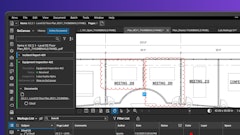
The need for construction is expected to expand by 5.7% in 2022–23, as well as for other sectors. The building industry has had to find innovative ways to become more efficient than ever to fulfill its growing needs.
Because of emerging technology and innovative solutions, construction companies can complete their tasks on time. And the advancements and discoveries in construction have made the buildings more substantial and energy-efficient. Technology has propelled building for years, improving both the sector as a whole and society.
The development of the construction sector has been greatly aided by technology. Construction has only improved with the development of connected tools and equipment, autonomous heavy equipment, 3D-simulated models, and more.
Let's go back to the early days when there were no power tools or large pieces of machinery. And productivity was compromised as a whole. Look at how technology in the form of accounting software, project management software and AI has changed the construction processes and is constantly increasing the production for construction companies at their sites.
About Construction Technology
The word "construction technology," according to the Construction Industry Institute, refers to a variety of cutting-edge equipment, software, tools, and other instruments used in the construction process to develop the industry.
- Using technology in construction creates the possibility for enhanced performance within the sector.
- The adoption of tried-and-true technologies, combined with predictability and reliability, can enhance productivity in the construction industry by 30% to 45%, according to studies.
- Crucial aspects like cost, schedule, and safety have significantly improved. Emerging technologies have had a favorable overall impact on the building sector.
The Reason for Construction Delays
Construction delays occur when demand grows without corresponding advances in productivity. This is why the construction sector needs the new technologies so much.
The inability to standardize building methods across the board makes it challenging to enhance output quickly. Each project is distinct from the others, as are the jobsites. Due to technological improvements, which have sped up the planning and execution of projects, construction has become more accessible and efficient.
Pre-fabrication and Off-site Construction
Construction has created a necessity for building as swiftly and efficiently as possible over the years. By creating crucial building project components off-site so they are ready to go when the sites need them, new techniques like prefabrication and off-site construction assist in speeding up the process.
Prefabrication is a technique that has been applied for a while. However, the building sector is entirely new to the prefabrication approach using 3D printing. Programming for a 3D printer specifies the precise size of the structural components you must create. The printer builds hundreds of layers onto a platform using liquid elements, including plastic, metal and cement, to fit the pre-programmed model into the software. After cooling, these structures can be used for their intended functions.
AI and Robots
The construction sector increasingly utilizes machine learning and artificial intelligence (AI) solutions. Because these digital technologies can perform specific duties that typically require a human worker to supervise, productivity is considerably increased for sites that employ them. This enables staff members to continue working on other, more urgent tasks at a jobsite.
AI can also support jobsites in tracking their development. It is simple to observe how much progress is achieved every day by using cameras to capture each stage of the project and comparing the footage to essential elements like BIM models, 3D drawings, and building schedules. AI technology can monitor performance and swiftly spot any structural mistakes you may have made in the past or may make in the future.
Using drones in the construction sector is very common. Drones give workers a close-up, bird's-eye view of dangerous tasks like checking bridges and towering structures while they remain on the ground safely. Drones can take aerial pictures of the construction site even when monitoring the construction progress. Although drones have specialized uses, the data they can gather and pass on to construction personnel are from a better and safer perspective.
Drones that are used on land can also be quite helpful. They may gather data from all over the jobsite property, utilizing features like light detection, ranging scan data and sensors.
Multiple Device Usage
The digital world's modern technology helps the building business save time. You can keep track of almost anything through computer software and smartphone apps, which save a ton of time when logging data and sharing progress. Everything from preconstruction management to field reporting can be done online.
The ability to transmit data in real-time between project managers and jobsites keeps everything on task and simple for everyone to access. Communication is substantially improved because the majority of these apps are cloud-based.
On-site workers can easily access their schedules and submit time cards for payment. Real-time transactions can also be made for information requests, vacation requests, and the delivery of verified documents. It also helps retain all records on a digital file for future reference, eliminating the need for a physical person to copy and track everything manually.
Developers of apps and software are always coming up with more efficient ways to enable the incorporation of such technologies into the construction sector and improve collaboration practices.
Building Information Modeling
Tracking changes to the models and prints is a significant barrier that makes construction more challenging. One of the best ways for the construction sector to handle any changes is the development of BIM.
3D models are used in BIM, which improves design and construction planning. With the help of BIM technology, any alterations that must be made to the design blueprints can be done and seen in real-time while also giving the structure a visual representation.
Labor Shortage
There have been many challenging moments for the construction business in terms of finding enough personnel to meet the needs of the projects that need to be finished. The industry continually has the challenge of losing people due to hardships and retirement. Even when they begin their careers, new employees frequently lack the skills and knowledge that their forerunners did and don't know how to manage the labor shortage.
Fortunately, technology has developed enough to help in these circumstances.
Autonomous heavy machinery safely follows its predetermined path using sensors, drones, GPS, and 3D models. With these techniques, jobsite excavation and grading can be done quickly and for less money. Also, many ways can be used to prevent workers from entering dangerous areas.



















